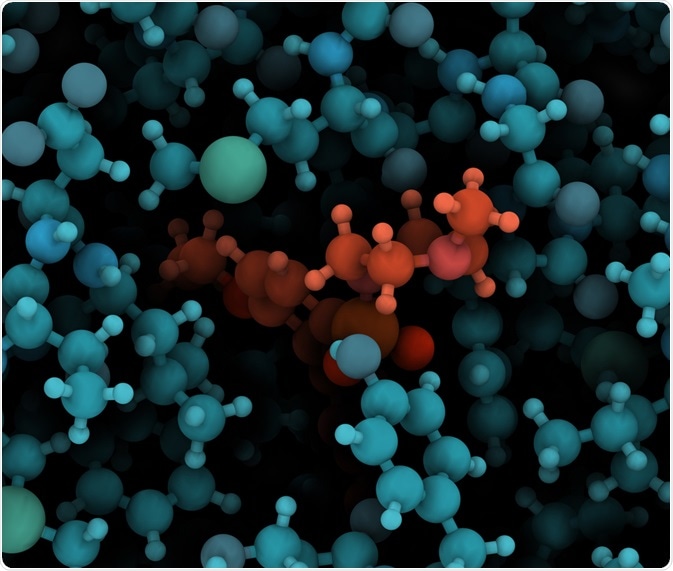Gas chromatography-Flame Photometric Detector (GC-FPD) is a method that is used to detect compounds and metals containing sulfur and phosphorus. This detector is coupled to a gas chromatography instrument to increase sensitivity for the detection of specific compounds.
 molekuul_be | Shutterstock
molekuul_be | Shutterstock
What is gas chromatography?
Gas chromatography is a separation technique that is used for the analysis of volatile compounds in the gas phase. In this method, a sample is dissolved and vaporized. This leads to separation of the components of a sample into a stationary and mobile phase.
An inert gas acts as the mobile phase and carries the analyte through the column. The stationary phase may be a solid adsorbent or a liquid. This is the only form of gas chromatography where the mobile phase does not interact with the analyte.
What is the flame photometric detector?
The Flame Photometric Detector or FPD is a sensitive detector that can detect phosphorus compounds in concentrations as low as a few parts per billion, and less than parts per million in the case of sulfur compounds.
In this detector, the effluent of the column is burnt in a hydrogen-rich atmosphere after being mixed with air. This produces a small flame where the sulfur and phosphorus-containing samples are decomposed into sulfide and HPO.
After the process of decomposition, the sample then enters another flame that excites the sample. The emitted light is converted to a current and a photomultiplier tube amplifies the signal. The optical filter on the photomultiplier tool can be set to a specific wavelength, for example, 526 nm to view phosphorus and 394 nm to view the light produced by sulfur.
Limitations of flame photometric detectors
Although the sensitivity of Flame Photometric Detectors is higher for compounds that contain phosphorus, one of the limitations in detecting sulfur is its non-linearity. The output of the detector is proportional to the flow rate of phosphorus, but in the case of sulfur, it is proportional to the square of the flow rate of sulfur. Thus, the calculation of the sulfur levels in samples is also not linear.
Detection of sulfur-containing compounds
GC-FLP is widely used to detect samples containing sulfur, especially in cases where sulfur is present along with a high concentration of other compounds, such as hydrocarbons.
Sulfur is an essential component of living cells. It is present in amino acids such as cysteine, and methionine, and in proteins, enzymes, and polypeptides that contain these amino acids. Apart from these amino acids, coenzyme A and alpha-lipoic acid are also sulfur-containing chemicals.
Vitamins, biotic and thiamine, and several metalloproteins and inorganic cofactors also contain sulfur. Thus, for the detection and analysis of sulfur in biological samples, this technique may prove very useful.
Detection of phosphorus in biological samples
The sensitivity of the flame photometric detector in detecting phosphorus is slightly higher than for the detection of sulfur. Phosphorus is also a critical component in many biological samples, such as in DNA and RNA. Similarly, living cells also use phosphate to store energy inside cells in the form of adenosine triphosphate.
One of the structural components of cellular membranes are phospholipids and calcium phosphate helps in the process of stiffening bones. Phosphorus is present in bones in the form of hydroxyapatite and calcium carbonate. It is also present in the enamel that covers the surface of teeth. Thus, detection of phosphorus is also critical during the analysis of biological samples.
Further Reading